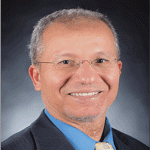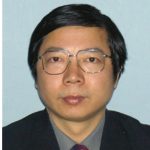 Feiyue Wang
Feiyue Wang
Professor, Institute of Automation, Chinese Academy of Sciences (CASIA), China
Title: TBD
Bio:
Feiyue Wang, ACM Distinguished Scientist, IFAC Fellow, AAAS Fellow, ASME Fellow, INCOSE Fellow, IEEE Fellow. In 2011 he won the Outstanding Research Award of the IEEE Intelligent Transportation Systems Society, and in 2014 he was given the Norbert Wiener Award of the IEEE Systems, Man, and Cybernetics Society “for fundamental contributions to and innovations in the theory and application of intelligent control and management to complex systems.” In 2015 he won the ITS Outstanding Application Award. In 2012 he won the IEEE ASME MESA Achievement Award. In 2011 he won the IEEE ITS Outstanding Research Award. In 2009 he won the ITS Outstanding Application Award. In 2007 he won the Second Class National Prize for Natural Sciences.
He used to be a Professor at the University of Arizona (1999-2009). Since 1999, he has been a Professor at the Institute of Automation, Chinese Academy of Sciences. He used to be the Director of the Laboratory of Complex Systems and Intelligence Sciences (1999-2011). He used to be the Vice President of Institute of Automation (2006-2010). Since 2011, he has been the Director of the State Key Laboratory of Management and Control of Complex Systems, Institute of Automation, Chinese Academy of Sciences.
He has served as President of the American Zhu Kezhen Education Foundation (2007-2008), President of IEEE ITS Society (2005-2007), President of Chinese Association for Science and Technology (CAST, USA) (2005), Vice President and Secretary General of Chinese Association of Automation (2008-2018), Founding Editor-in-Chief (EiC) of the International Journal of Intelligent Control and Systems (1995-2000), EiC of IEEE Intelligent Systems (2009-2012), EiC of IEEE Transactions on Intelligent Transportation Systems (2009-2015), EiC of Acta Automatica Sinica (2011-2017), EiC of IEEE/CAA Journal of Automatica Sinica (2014-2017), EiC for the IEEE Transactions on Computational Social Systems (2017-Present).
 Mohsen Guizani
Mohsen Guizani
Professor, Computer Science and Engineering Department of Qatar University.
Title: TBD
Bio:
IEEE Fellow, Senior Member of ACM, The Distinguished Professor of IEEE ComSoc, Founder and Distinguished Editor-in-Chief of Wireless Communications and Mobile Computing (Wiley).
Mohsen Guizani received the B.S. (Hons.), M.S., and Ph.D. degrees in electrical and computer engineering from Syracuse University, Syracuse, NY, USA. He is currently a Professor with the Computer Science and Engineering Department, Qatar University, Qatar. Previously, he worked in different institutions, such as the University of Idaho, Western Michigan University, the University of West Florida, the University of Missouri-Kansas City, the University of Colorado Boulder, and Syracuse University. He is the author of nine books and more than 800 publications. His research interests include wireless communications and mobile computing, applied machine learning, cloud computing, and security and its application to healthcare systems.
He was elevated to an IEEE Fellow, in 2009. He was listed as a Clarivate Analytics Highly Cited Researcher in Computer Science, in 2019 and 2020. He has won several research awards, including the 2015 IEEE Communications Society Best Survey Paper Award and four best paper awards from ICC and GLOBECOM conferences. He was also a recipient of the 2017 IEEE Communications Society Wireless Technical Committee (WTC) Recognition Award, the 2018 Ad Hoc Technical Committee Recognition Award, and the 2019 IEEE Communications and Information Security Technical Recognition (CISTC) Award. He served as the Editor-in-Chief for IEEE Network and currently serves on the Editorial Board of many IEEE journals/transactions. He was the Chair of the IEEE Communications Society Wireless Technical Committee and the TAOS Technical Committee. He served as the IEEE Computer Society Distinguished Speaker and is currently the IEEE ComSoc Distinguished Lecturer.
 Alberto Del Bimbo
Alberto Del Bimbo
Professor, University of Firenze, Italy
Title: TBD
Bio:
Alberto Del Bimbo, ACM Distinguished Scientist, Chief Editor of ACM TOMM (ACM Transactions on Multimedia Computing, Communications, and Applications), Chair of ACM SIGMM, IAPR Fellow, IEEE Senior Member. Initiator of SmallPixels. He was the recipient of the prestigeous Award for “Multimedia Computing, Communication and Application Outstanding Technical Contribution Award”, “ACM Outstanding Scientist”.
He is a distinguished scientist in Computer Engineering, doing research and research transfer on Computer Vision, Artificial Intelligence and Multimedia, and their applications to industry and society. He was one of the first researchers to start research in image and video content-based retrieval in the late 80’s. His research interests have been in surveillance and monitoring, industry automation, smart environments for cultural heritage, enhanced and personalized interactivity. He leaded important collaborations with national and international companies, such as Leonardo Finmeccanica, RFI Rete ferroviaria Italiana, Thales Italia, Panasonic, US IARPA Agency, IMRA Europe (AISIN group), NVIDIA. He has been published a total of more than 700 high-quality papers, which have been cited more than 17,000 times in Google Scholar, H-Index 61. A total of 3 books have been published, “Visual Information Retrieval”, which was one of the most cited books in the early times of image and video content-based retrieval. 1 patent. He has served scientific and cultural institutions and associations at the national and international level, serving as Multimedia Tools and Applications, Pattern Analysis and Applications, International Journal of Image and Video Processing. Served as IEEE Transactions on Pattern Analysis and Machine Intelligence, IEEE Transactions on Multimedia, Pattern Recognition, Journal of Visual Languages and Computing. Served as the chairman of 9 computer vision and multimedia international conferences. Served as the project chair of 8 international scientific conferences and seminars. Provide invited tutorials and keynote speeches at many top scientific conferences in the field of computer vision and multimedia.
 Marc Baaden
Marc Baaden
Director, UPR9080, Centre national de la recherche scientifique (CNRS), France
Title: TBD
Bio:
He started working on biological systems in Mark SP Sansom’s group at the Laboratory of Molecular Biophysics, University of Oxford, where he was a postdoctoral fellow during the years 2001 and 2002.
He has published more than 70 papers and has been cited more than 5000 times in Google Scholar, h-index 39. He published 5 papers in Nature and its sub-journals: The first work “X-ray structure of a pentameric ligand-gated ion channel in an apparently open conformation” was published in the 2009 January issue of Nature. “X-ray structures of general anaesthetics bound to a pentameric ligand-gated ion channel” was published in Nature in January 2011. “A locally closed conformation of a bacterial pentameric proton-gated ion channel” was published in Nature structural & molecular biology in August 2012. “A membrane-inserted structural model of the yeast mitofusin Fzo1” was published in Scientific Reports in August 2017, where Scientific Reports is an online multidisciplinary, open access journal from the publishers of Nature. “Modelling lipid systems in fluid with Lattice Boltzmann Molecular Dynamics simulations and hydrodynamics” was published in Scientific Reports in November 2019. He published 4 high-level papers in the American magazine PNAS: “One-microsecond molecular dynamics simulation of channel gating in a nicotinic receptor homologue” was published in Proceedings of the National Academy of Sciences (PNAS) in April 2010. “Allosteric and hyperekplexic mutant phenotypes investigated on an α1 glycine receptor transmembrane structure” was published in Proceedings of the National Academy of Sciences (PNAS) in March 2015. “String method solution of the gating pathways for a pentameric ligand-gated ion channel” was published in Proceedings of the National Academy of Sciences (PNAS) in May 2017. “Glutathionylation primes soluble glyceraldehyde-3-phosphate dehydrogenase for late collapse into insoluble aggregates” was published in Proceedings of the National Academy of Sciences (PNAS) in December 2019.
He specialized in the numerical simulation of water and ion transporting membrane protein systems based on large-scale molecular dynamics simulations. He investigates advanced analysis of molecular dynamics trajectory data as well as its visualization and interactive steering of such simulations. He was awarded a “young researcher” prize by the French chemical society in 2010 and is the main developer of interactive simulations and visualization tools including MDDriver, UnityMol, HyperBalls, FvNano and ExaViz/Vitamins.
Yongtian Wang
Professor, Beijing Institute of Technology, China
Director, Institute of Optoelectronic Information Technology, China
Title: TBD
Bio:
Yongtian Wang, SPIE Fellow, OSA Fellow, IET Fellow, and a member of the board of directors of the Chinese Society for Optical Engineering (CSOE), China Computer Federation (CCF) and China Society of Image and Graphics (CSIG).
In 1986, he received a doctorate degree in engineering from the Department of Physics, Reading University, UK and continued to do post-doctoral research. After returning to China in 1988, he has been working at Beijing Institute of Technology, during which time he has been invited to relevant universities in the United Kingdom, Spain, Japan, and the United States for collaborative research. In 2000, he was funded by the National Science Fund for Distinguished Young Scholars. In 2001, he was hired as a distinguished Professor of the Ministry of Education. In 2006, he became the leader of the innovation team of the Ministry of Education.
He is the founding director of Beijing Engineering Research Center of Mixed Reality and Advanced Display. He has been engaged in teaching and scientific research in the fields of technical optics and virtual reality for a long time. The current scientific research projects include the National High-Tech Research and Development Program (863) project, the National Natural Science Foundation of China’s instrument special project, GF project and international cooperation projects. His research interests include optical design and CAD, optical instrumentation, 3D display, image processing, virtual reality and augmented reality, and human-computer interaction. Relevant scientific research achievements include 1 third prize of National Science and Technology Progress Award, 4 second prizes of Provincial and Ministerial Science and Technology Progress Award.
 Zhigeng Pan
Zhigeng Pan
Professor and Dean, Nanjing University of Information Science and Technology, China
Title: TBD
Bio:
Zhigeng Pan received a Ph.D. degree in 1993. He became a Full Professor at Zhejiang University in 1996. He has published more than 100 technical papers on important journals and conferences, including TPAMI, TVCG, IEEE Multimedia, ACM Multimedia, and IEEE VR. His research interests include virtual reality, computer graphics, and HCI. He is a member of ACM SIGGRAPH. He is also the Program Co-Chair of CASA 2011, SIGGRAPH Asia 2011 (Sketches and Posters), IEEE VR 2013, and SIGGRAPH Asia 2016 (Symposium on Education), and the Conference Co-Chair of VRCAI2012, VRCAI2013, VRCAI2015, and CW2016. He is also the Editor-in-Chief of Transactions on Edutainment. He serves as the Associate Editor of International Journal of CAD/CAM.
His “Research on sound and image modeling and real-time rendering in virtual reality” won the second prize of China University Science and Technology Progress Award (Natural Science), and in 2008 won the “Multi-ownership navigation simulation system and its development” Platform” National Science and Technology Progress Award (ranked third). In 2000, he was awarded the Special Fund for Excellent Talents of the Natural Science Foundation of Zhejiang Province and the Excellent Young Teacher Teaching and Research Award Program of the Ministry of Education. He is also the Project leader of the following projects: “Avatars in Intelligent Virtual Environments” (NSFC). “Integration of Distributed Virtual Environment and E-Commerce” (NSFC in Zhejiang Province). “Networked Virtual Environment”, Excellent Young Teacher Project, (Education Dept. Project). “The Study of Intelligent virtual Environments”, China-India cooperation project (MOST, China).
 Haibo Li
Haibo Li
Professor, KTH Royal Institute of Technology, Sweden
Title: TBD
Bio:
Dr. Haibo Li is a full Professor in Media Technology in the School of Electrical Engineering and Computer Science at KTH Royal Institute of Technology. He received the Technical Doctor Degree in Information Theory from Linköping University, Sweden, in 1993. His doctoral thesis was dealt with advanced facial image analysis and synthesis techniques for low bitrate video. Dr Li got the “Nordic Best PhD Thesis Award” in 1994. In 1997 Dr. Li was awarded the title of “Docent in Image Coding”. During his period at Linköping University, he developed advanced image and video compression algorithms, including extremely low bitrate video compression, 3D video transmission, and teleoperation and telepresence.
Since joined Umeå University as a full Professor of Signal Processing in 1999, he set up the Digital Media Lab, and co-founded Umeå Center for Interaction Technology (UCIT), Umeå University, and working on advanced Human, Thing and Information interaction techniques. He initialized and developed with other two Professors Civilingenjörprogram, Design and Interaction (Doit), one of the most popular programmes in Umeå University. He is now working on media technology to support human communication at KTH. Prof. Li is the team leader of the team of Media Lab in MID. Prof. Li was the program director of Master of Science in Media Technology and the program director of Master of Science in engineering (Civilingenjörprogram) in Media Technology, at KTH. Prof. Li has been chairing sections at relevant international conferences and was actively involving in MPEG activities in low bitrate video compression. He has contributed to several EU projects. He has published more than 250 technical papers including chapters in books and holds six international patents as a principal inventer in multimedia and artificial intelligence area.
Research directed by Haibo Li has incubated several listed companies. Currently, Haibo Li is Supervisor of Manomotion. This company, which specializes in the development of gesture interaction on mobile devices, received a funding of 2 million euros from the European Union Horizon Project in 2019, and was named Sweden’s top virtual reality company in 2021.
 Dongdong Weng
Dongdong Weng
Professor, Beijing Institute of Technology, China
Title: TBD
Bio:
Dongdong Weng graduated from the National Key Subject of Optical Engineering, Beijing Institute of Technology, and received his Ph.D. degree in 2006. He is a Professor of the Centre for Research on Optoelectronics, Information Technology & Colour Engineering of Beijing Institute of Technology and working on the field of Augmented Reality, Virtual Reality, Human-Computer Interaction, etc. In recent years, he has been studying on Virtual and Augmented Reality, Human-Computer Interaction, Wide Range Augmented Reality System, Augmented Reality for Medicine/Military/Industry application, Precise tracking algorithm and instrument, etc. As the project leader, he has been responsible for and complete the National High Technology Research and Development Program (863 Program) project “The virtual and real fusion display device”. At present, he is in charge of many national, provincial and ministry level projects including the national science fund for young scientists “The research on coded image depth extraction method for the dynamic virtual-real occlusion problem in Augmented Reality”. He participated in more than twenty provincial or ministry projects including the National High Technology Research and Development Program (863 Program), National Outstanding Youth Fund, the sub tasks of the National Basic Research Program of China (973 Program), Military 863 Projects as well as several provincial and ministerial production and research topics. He completed a set of wide range augmented reality roaming system, which was the first one open to the public, installed at the Science Center of Guangzhou. He proposed an augmented reality framework based on multiple fixed cameras. It was applied in the augmented reality-based flight simulator project. He has published over 30 papers in recent years and made over 10 patent applications.


